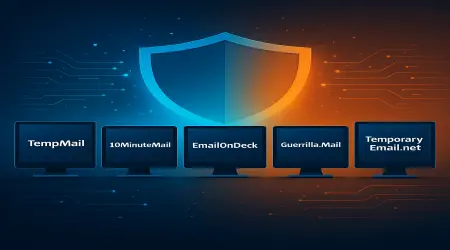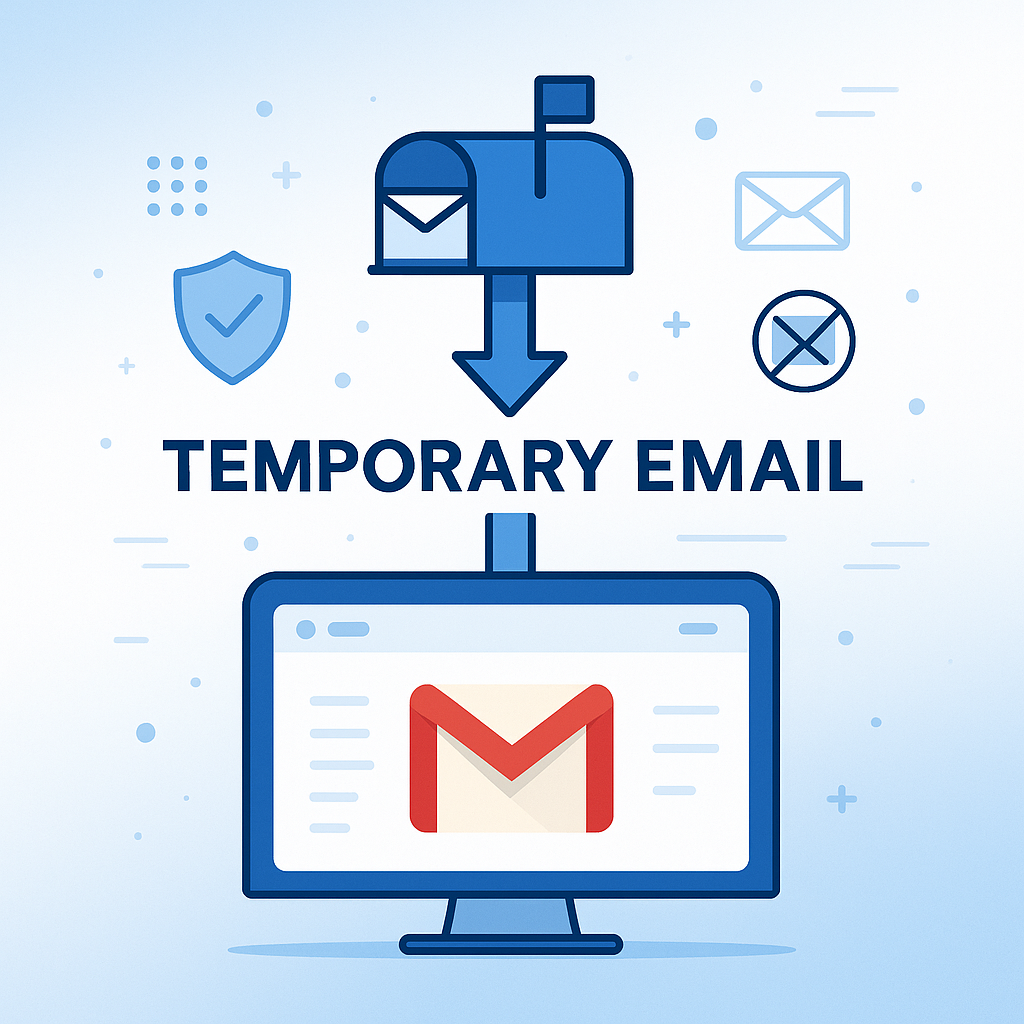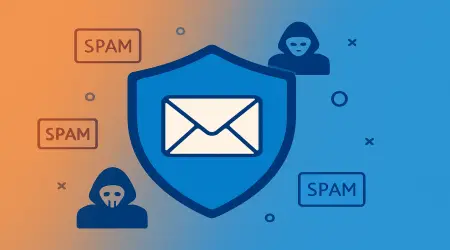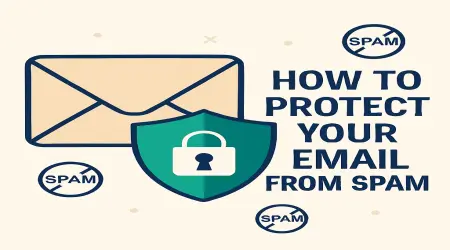

Fake Email & Temporary Email: The Ultimate Guide to Protecting Your Privacy in 2025
Introduction
In today's digital landscape, your email address is often the first key to access websites, services, downloads, and online tools. However, exposing your primary email can lead to a flood of spam, phishing attempts, marketing messages, and even identity theft.
Fortunately, fake email services—also known as temporary email or disposable email—offer a powerful way to protect your privacy. With platforms like Temporary-email.com, you can instantly generate a one-time-use email address that allows you to receive messages without revealing your personal inbox.
This comprehensive guide will walk you through everything you need to know about fake email usage in 2025.
What You'll Learn:
What is a fake email or temporary email
How it works
Why you should use one
Pros and cons
Use cases
Legality
Best practices
Frequently asked questions
What Is a Fake Email Address?
A fake email is a temporary, disposable email address that you can use for short-term purposes. Unlike Gmail or Yahoo addresses, fake emails:
Do not require registration
Expire after a limited time (usually within 10 to 60 minutes)
Are completely anonymous
Cannot be traced back to your identity
You can receive emails such as:
Activation links
Confirmation codes (OTP)
Temporary passwords
Download links
Once you're done using the fake email, it auto-deletes itself—leaving no trace and no spam.
How Does Temporary-email.com Work?
Temporary-email.com offers a quick and user-friendly way to generate disposable email addresses. Here’s how it works:
Step 1: Access the Website
When you visit Temporary-email.com, a fake email address is instantly generated for you.
Step 2: Receive Emails in Real-Time
Any emails sent to that address will appear instantly in your browser inbox. No need to refresh manually.
Step 3: Use the Email
Copy the email address and paste it into any signup form, newsletter, or site you don’t fully trust.
Step 4: Auto Expiration
Your temporary inbox will self-destruct after a short time. You don’t need to worry about deleting or managing it.
Optional Features:
Refresh inbox manually
Create a new email address
Use custom domain (if available)
Copy to clipboard with one click
Why Use a Fake Email?
Protect Your Privacy
Giving away your primary email address to every website is a privacy risk. A fake email acts as a buffer, ensuring your personal data stays safe.
Avoid Spam
Tired of endless marketing newsletters? Disposable emails are ideal for situations where you're only interested in a one-time service.
Test Tools and Platforms
Need to test SaaS platforms, download trials, or access gated content? Use a fake email to bypass unnecessary forms without risk.
Save Time
No signup, no login, no verification process. Fake emails are faster than traditional inboxes.
Reduce Data Footprint
The fewer sites know your real email, the less digital clutter and data tracking you experience.
Most Common Use Cases
| Scenario | How a Fake Email Helps |
|---|---|
| Signing up on untrusted websites | Use a fake email to avoid giving personal info |
| Accessing one-time downloads | Protect your real email from spam traps |
| Participating in online polls | Bypass registration with ease |
| Registering for giveaways or coupons | Avoid spam by using a temporary inbox |
| Creating test accounts for development | Speed up the QA and testing process |
| Using free trials | Prevent marketing emails after trial ends |
Pros and Cons of Fake Email
Advantages
Completely anonymous
No signup or password needed
Instant access to messages
No spam in your personal inbox
Fully encrypted via HTTPS
Free to use
Disadvantages
Limited time for receiving emails
Messages are not stored permanently
Cannot use it for long-term accounts
Some websites block temporary domains
Fake Email vs Real Email
| Feature | Fake Email | Real Email |
|---|---|---|
| Registration Required | No | Yes |
| Time to Create | Instant | 2–5 minutes |
| Duration | Temporary (10–60 min) | Permanent |
| Anonymity | High | Low |
| Spam Protection | Excellent | Weak |
| Usability | One-time use only | Daily use |
Is Using a Fake Email Legal?
Yes, using a fake or temporary email is 100% legal if you are not using it for fraudulent purposes.
You are within your rights to use disposable emails when:
Testing websites
Avoiding spam
Accessing one-time content
Protecting your privacy
However, it becomes illegal if used for:
Impersonation or identity fraud
Circumventing paid services unfairly
Harassment or criminal activity
Temporary-email.com encourages ethical use only.
What Websites Accept Temporary Emails?
Most websites and tools do accept disposable email addresses. These include:
Newsletter subscriptions
Free trial offers
eBook and whitepaper downloads
SaaS and software testing platforms
Forums, community platforms
Online surveys
Some high-security platforms (like banks or government portals) may block known temporary domains. In that case, you may:
Switch domain (if supported)
Use incognito browser mode
Clear cookies to bypass detection
Using Fake Emails on Mobile Devices
Temporary-email.com is fully mobile-responsive. You can:
Open the site on your Android or iOS browser
Generate and copy fake emails instantly
Read verification messages in real-time
Complete registrations on apps or mobile websites
No need to install any app or plugin.
Best Practices for Using Fake Emails
Never use a fake email for banking, social media, or sensitive accounts
Use it only for short-term tasks like sign-ups or trials
Take screenshots or copy important links before the inbox expires
Refresh your inbox if messages are delayed
Use incognito mode to avoid caching issues
Security and Privacy at Temporary-email.com
Your connection to Temporary-email.com is protected with SSL encryption. We do not:
Store IP addresses
Track activity across sessions
Log or retain any messages after deletion
Our goal is to offer a completely anonymous and secure experience with zero data retention.
Frequently Asked Questions (FAQ)
Can I extend the lifespan of a temporary email?
Currently, most emails auto-delete after 10 to 60 minutes. However, we are working on a feature that lets users extend the timer.
Can I use fake emails to verify accounts?
Yes, most basic verification processes (email confirmation links, OTPs) work perfectly with Temporary-email.com.
Do you keep logs or track emails?
No. All sessions are private, and we do not store any emails after expiration. Your privacy is our top priority.
Are your services free?
Yes. Temporary-email.com is 100% free and always will be.
Can I customize my fake email address?
In future updates, users may be able to customize the username and select from multiple domains.
What if my email doesn't arrive?
Try refreshing the inbox. If it still doesn’t appear, generate a new address and try again.
Is this service anonymous?
Yes. No personal data is collected or required. You do not need to register or enter any name or password.
Conclusion
The need to protect your digital identity has never been more urgent. With growing concerns around data privacy, spam overload, and phishing scams, using a fake email is a smart, safe, and effective solution.
Temporary-email.com provides:
Instant access to temporary inboxes
Total anonymity and zero spam
A lightweight, mobile-friendly interface
No cost, no sign-up, no risk
Whether you’re testing an app, accessing a discount code, or just protecting your inbox, a temporary email gives you peace of mind in a digital world.
Start now at Temporary-email.com — your shield against spam and identity leaks.

